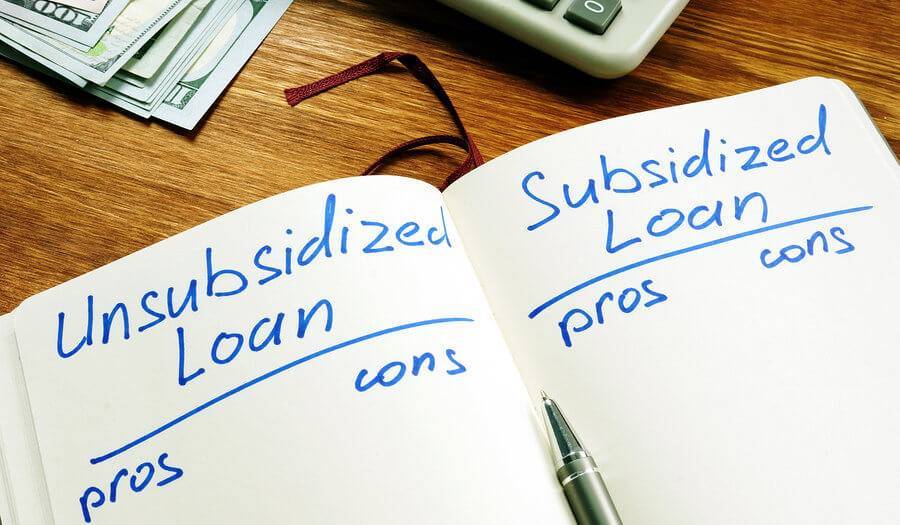
Different types of Student Loans
In the United States, a considerable percentage of college students take out federal student loans for higher education.
With the U.S. Department of Education and the federal government acting as the lender, they are highly favored over private loans. When applying for federal student loans, it is important to find a loan that best fits you. In accordance, it is imperative to know what you’re applying for in great detail. You’d want to look at various factors, such as low-interest rates, flexible repayment options, terms and agreements, and even application or origination fees.
Your first step is to see what federal student loan options are available to you. It is important not to assume that all student loans are the same. Benefits vary by the lender; this includes private loans as well. Then, your next step after considering your options is selecting the best loan that fits you. Here are the following options:
PRIVATE LOANS
|
FEDERAL LOANS
|
Federal Loans:
Aside from private loans, you should know that you have the option to take out a federal student loan. These are awarded based on set eligibility criteria, including financial need. The direct federal student loans breakdown is as follows:
Direct Subsidized Loans (subsidized Stafford loans) focus on students with financial needs. With this loan, recipients are not responsible for paying the interest charges on the loan while in school, and no credit history is required to qualify.
Direct Unsubsidized Loans (unsubsidized Stafford loans) are available to undergraduate and graduate students who meet the eligibility requirements. There is no requirement to demonstrate financial need or credit history (Lustig, 2020), but the borrower is responsible for paying the interest during all periods.
Direct PLUS Loans (Parent and Grad) are available to eligible graduate students and parents. With Parent PLUS loans, parents of dependent undergraduate and graduate students can borrow money to pay for their child’s education (Lustig, 2020). Fixed interest rates on Parent PLUS loans tend to be slightly higher than those for Stafford Loans, and the borrower must have good credit to qualify (Lustig, 2020). A Grad PLUS loan is a federal student loan available to graduate and professional students. Unlike Stafford and Perkins loans, which do not consider a graduate student’s credit history for qualification, Grad PLUS borrowers must have good credit (Lustig, 2020).
Direct consolidation loans are a bit different than other types of federal loans. They allow borrowers to combine all eligible federal student loans into a single loan, usually done after leaving school, without an application fee (Lustig, 2020).
Private Loans:
When choosing to take out a private loan, there are many things to consider. Depending on your college status, you have the option to pick from Private Undergraduate student loans, Private Parent student loans, and Private Graduate student loans. However, before you get to the part of selecting, you have to get past the first step of eligibility.
Not everyone can take out a private student loan—many things are under consideration when determining if you’re eligible. Factors such as your credit history and income are considered, resulting in most private loans requiring a cosigner due to many students having little to no credit history. A cosigner is often a parent or a relatively close family member with established credit and income who agrees to take equal responsibility to repay the loan if the student borrower is unable (College Ave, 2021). Private student loans for undergraduate students rely solely on cosigners.

As for Private Parent Loans, it’s in the name. Private lenders offer loans to a parent or guardian who is helping a student pay for school. Under this option, the student is not legally responsible for repaying the parent loan. Lastly, when understanding Private Graduate Loans, know that it works the same as any other type of private loan. The graduate student might need a cosigner or have a parent or guardian take out the loan. However, if the graduate student has a solid credit history, they could qualify individually for a lower interest rate (College Ave, 2021).
There are many misconceptions when it comes to transferring loans. The main thing people are curious about is can they transfer private student loans to federal loans or federal loans into private loans? Federal student loans can be turned into private student loans by refinancing. However, private loans can not be made into federal loans. Because private loans do not have the same options of repayment plans and are ineligible for any federal forgiveness programs, it is vital that you review your options for refinancing a federal loan.
Now, before deciding, really consider the options above. You want to apply to the loans that apply to you and your overall financial picture. Look at the negatives and look at the benefits. Weigh out each option and remember only to borrow what’s needed.
References
Federal vs private student loans. College Ave. (2021, December 2). Retrieved February 6, 2022, from https://www.collegeavestudentloans.com/resources/federal-vs-private-loans/
Lustig, M. (2020, September 16). Understanding the types of federal student loans available … U.S. News & World Report. Retrieved February 6, 2022, from https://www.usnews.com/education/blogs/student-loan-ranger/articles/understanding-the-types-of-federal-student-loans-available
What to look for in student loans. College Ave. (2021, August 26). Retrieved February 6, 2022, from https://www.collegeavestudentloans.com/resources/how-to-choose-a-student-loan/



